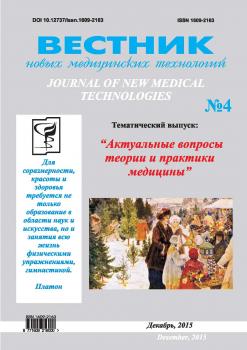The aim of the study was to examine gender differences in quality of life, depending on length of stay in the Northern region. The object was people who regularly held medical examination. Total number of respondents was 667 people aged 21 to 64 years, among them 281 women and 386 men. All respondents were divided according to the length of residence in the Northern region: 0-5 years, 5-10 years, 10-20 years and more than 20 years. Quality of life was assessed be means of non-specific SF-36 questionnaire. To detect latent factors the method of principal component analysis was used. The probability that the scale is the leading component of quality of life was determined by bootstrap analysis. With the increase in part-time adaptation to the Northern region of women have their significant dynamics of the physical component of quality of life, where as changes in psychological characteristics are not reliable. Men are more concerned with subjective restriction of the social role of the state of physical and psychological health. In the initial period of adaptation of a relatively high level of quality of life is achieved by activation of compensatory-adaptive mechanisms, the subsequent steps can only be described as stable, because it continues to change the pattern of defining and limiting the quality of life of latent traits, which corresponds to the concept of "incomplete adaptation ".
experience of adaptation, the Northern region, quality of life, gender
Введение. Являясь первоначально социологическим понятием, термин «качество жизни» (КЖ) в настоящее время нашел употребление в физиологии и медицине. На современном этапе развития медицина приходит к той точке зрения, что хорошее состояние здоровья является отражением не только уровня медицинской помощи, но и удовлетворения потребностей индивидуума, его адаптации в физической, психологической и социальной сферах. ВОЗ определяет КЖ как «восприятие индивидами их положения в жизни в контексте культуры и систем ценностей, в которых они живут, и в соответствии с их собственными целями, ожиданиями, стандартами и заботами» [2].
В 2004 г. Президент России впервые определил КЖ как целевой критерий социально-экономического развития России. Ханты-Мансийский автономный округ - Югра -один из немногих субъектов Российской Федерации, где
1. Ayvazyan SA, Bushtaber VM, Enyukov IS, Meshalkin LD. Prikladnaya statistika. Klassifikatsiya i snizhenie razmer-nostey. M.: Finansy i statistika; 1989. Russian.
2. Amirdzhanova VN, Goryachev DV, Korshunov N1, Reb-rov AP, Sorotskaya VN. Populyatsionnye pokazateli kachestva zhizni po oprosniku SF-36 (rezul´taty mnogotsentrovogo issledovaniya kachestva zhizni «MIRAZh». Nauchno-prakticheskaya revmatologiya. 2008;1:36-48.
3. El´yashevich AM. Gendernye roli i sotsionika. V Sotsio-nika. Sbornik dokladov IV moskovskoy nauchnoy konferentsii; 2001 may; Moscow, Russia; 2001. http://www.socioniko.net/ru/ articles/yel-gender.html. Russian.
4. Krivoshchekov SG, Leutin VP, Divert VE, Divert GM, Platonov YaG, Kovtun LT, et al. Sistemnye mekhanizmy adap-ta-tsii i kompensatsii. Byulleten´ SO RAMN. 2004;2(112):148-153. Russian.
5. Kurbatov AV, Amlaev KR, Murav´ev KA. Sovremennoe sostoyanie problemy neravenstva v zdorov´e: ekologicheskie, gendernye, ekonomicheskie aspekty (obzor). Vestnik Stavropol´skogo gosudarstvennogo universiteta. 2011;3:24-30. Russian.
6. Solov´eva SV, Naymushina AG. Kachestvo zhizni kak mediko-biologicheskaya kharakteristika sostoyaniya zdorov´ya zhiteley severa Tyumenskoy oblasti i goroda Tyumeni. Fundamental´nye issledovaniya. 2011;6:162-165. Russian.
7. Efron B. Netraditsionnye metody mnogomernogo sta-tisticheskogo analiza. M.: Finansy i statistika; 1988. Russian.
8. Ware JE, Snow KK, Kosinski M, Gandek B. Sf-36 Health Survey. Manual and Interpretation Guide. Lincoln: RFQualityMetric Incorporated; 2000.





